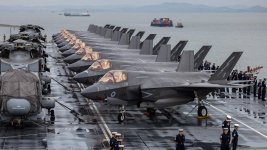Iran’s air defense failure sends shockwaves to Russia
According to Russian-language military forums and unofficial commentary shared across pro-Kremlin channels, the Israeli operation has amplified existing doubts about Russia’s capacity to withstand a coordinated assault from a technologically advanced adversary such as NATO. As one commentator put it, “Everyone here understands this is exactly what would happen to Russia if any NATO country decided to act.”
Defense analysts in Moscow are reportedly acknowledging that Iranian systems—some modeled on or directly derived from Russian technologies—were unable to provide any sustained resistance even during the second day of Israeli airstrikes.
One recurring assessment circulating in Russian defense circles states, “Absolutely powerless air defense, when what we see in the crosshairs is all we’ve got.”
Totally different tech base. The Iranians are two decades behind the Russians.
While they have developed some decent radars with Chinese assistance, the missiles are much older designs and they don't have anything with advanced seekers and agile bodies.
For example, the Iranians do not have advanced equivalents of the 9M96 family used in the S-300/400 and 9K317 of Buk. And they obviously do not have LR equivalents of the S-400's 48N6 and 40N6 either. Their missiles are a lot closer to older American systems like the SM-2, which would also perform quite poorly against modern weapons. The Iranians do not have the equivalent of the S-350 either, which was initially developed for the South Koreans by the name of KM-SAM and was further improved by Russia for its own use.
The Iranians do not have anything equivalent to the S-400 C2 either.
I've pointed out for years (essentially a decade) that Iranian SAMs will fail against Israel. The Chinese at the time were no better, they have improved a lot since then, after using the S-400 as a benchmark, but most of their existing SAMs are also useless. The Indian Navy had identified this weakness in eastern systems in the 90s along with DRDO and plugged the gap using Barak 1 in the 2000s on their ships, followed by Akash and MRSAM for the IA and IAF. But Iran and China are still using outdated systems. The Americans need to get rid of their SM-2s as well, it won't work against the Russians.




